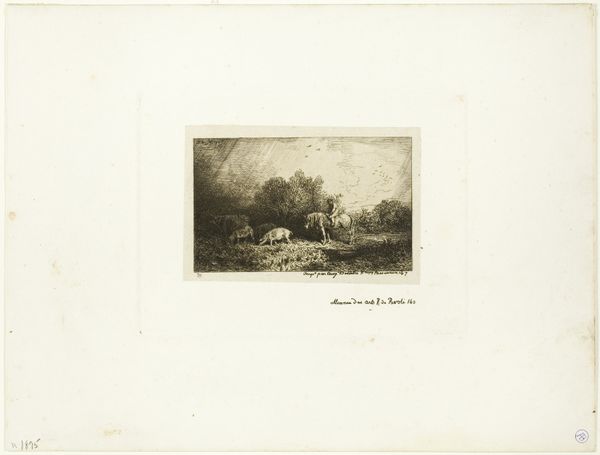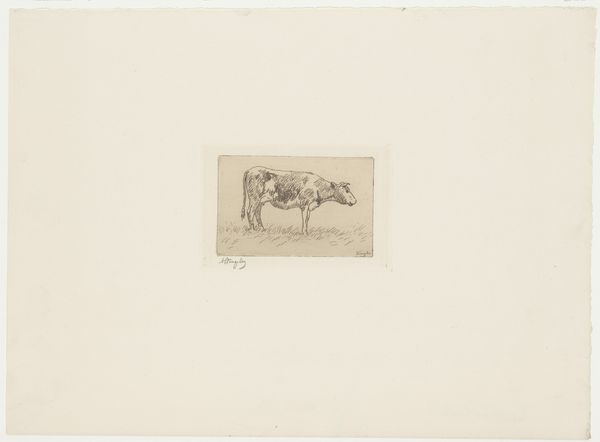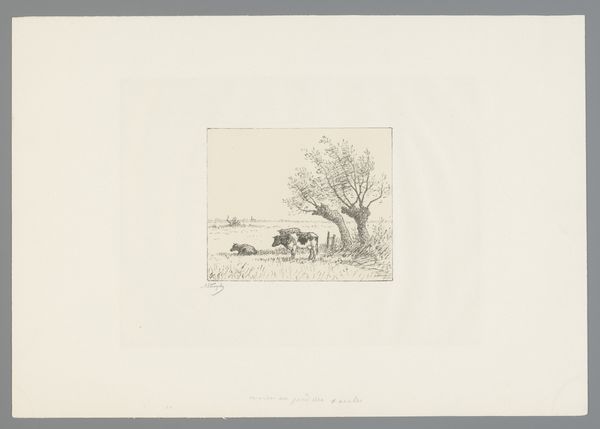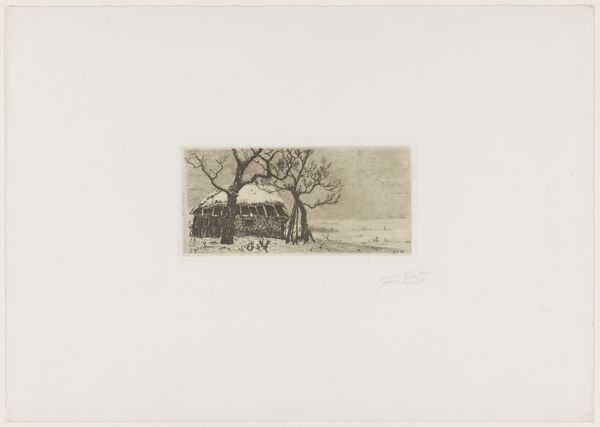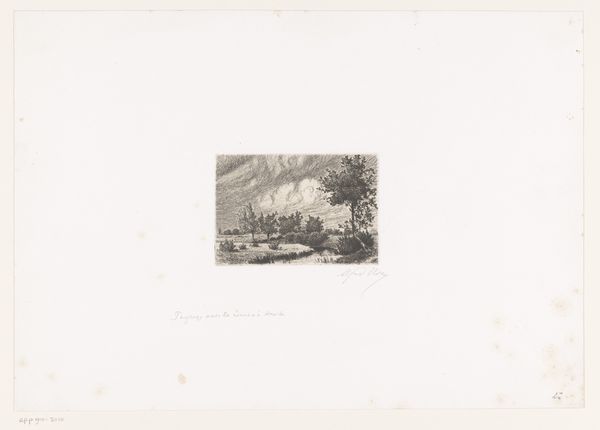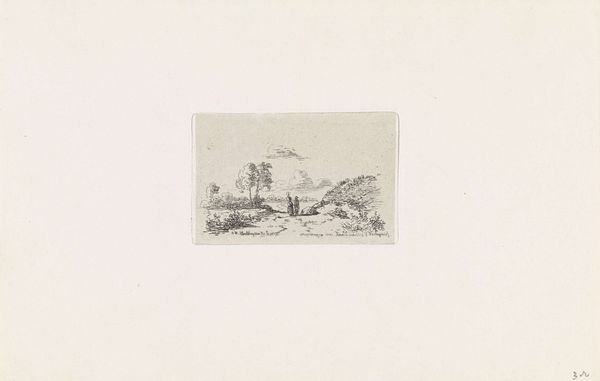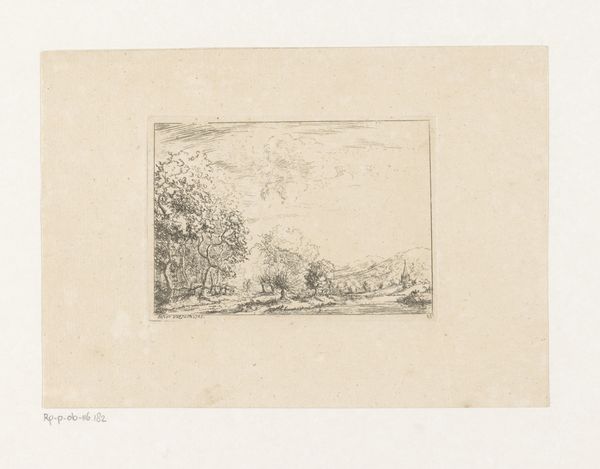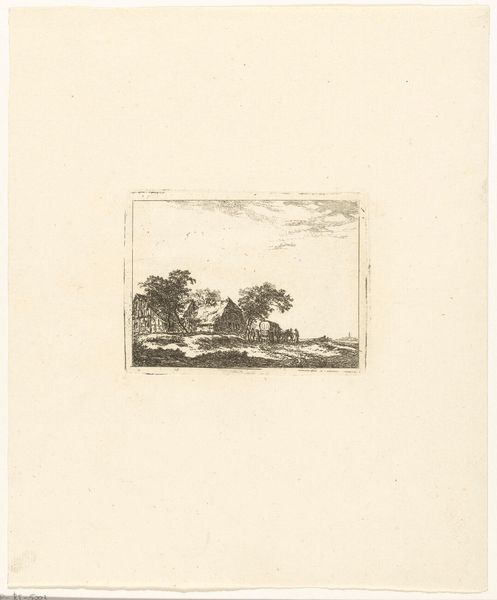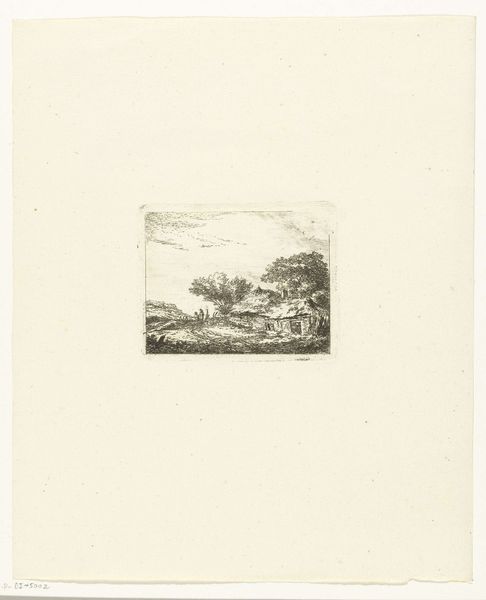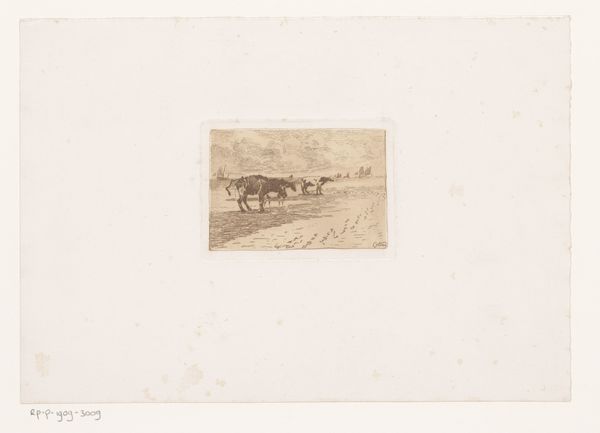
drawing, print, etching, paper, ink, pen
#
drawing
#
16_19th-century
# print
#
etching
#
landscape
#
paper
#
ink
#
pen-ink sketch
#
france
#
pen
#
genre-painting
#
realism
Dimensions: 66 × 90 mm (image); 73 × 96 mm (chine); 78 × 103 mm (plate); 218 × 309 mm (sheet)
Copyright: Public Domain
Curator: Let's turn our attention to this striking etching by Charles Jacque, completed in 1848. It's titled "Woman Tending Two Cows." Editor: Immediately, I'm struck by the scale and intimacy. It's a small work, drawing the viewer in. The delicate lines create a surprisingly serene mood. Curator: Indeed. Jacque's use of line is critical here. Notice the economy with which he defines form, especially the textures of the landscape. The dark, almost frenetic hatching of the vegetation sharply contrasts the smooth shading that shapes the cattle, setting up a visual opposition between the human-modified and the natural realms. Editor: And those cattle! Cows often symbolize sustenance and tranquility. The woman tending them—a near timeless image—speaks to agrarian life and a simpler connection to the natural world. The staff she carries acts almost like a scepter, hinting at her dominion in this scene. Curator: Interesting observation! And to build upon the figure, note how Jacque positions the woman in relation to the tree; both acting as framing devices on the left, giving a stability to the scene which mirrors the steadiness of the cowherd's labor. The landscape flattens towards the center, almost dissolving into tonal values and contrasts. Editor: Yes, that flattening reinforces the symbolic space, allowing for a timeless reading of the scene. The cowherd and the cows become almost allegorical—stand-ins for broader ideas about human dependence on nature and the simple virtues of country life, reminiscent of the pastoral imagery that came to the forefront again and again in the 19th century, though rendered here without idealization. Curator: I concur. This absence of romanticized idealization distinguishes Jacque’s realism from pure pastoral fantasy, highlighting the raw simplicity, which aligns his art more directly with direct experience, where light and shadow become principal actors. Editor: It invites contemplation on our relationship with nature, presented through potent symbols and skillful rendering. I’m left with a lingering sense of quiet appreciation, and reflection. Curator: Precisely. It demonstrates the enduring power of minimalist composition when yoked to keen observation of the structure inherent in everyday life.
Comments
No comments
Be the first to comment and join the conversation on the ultimate creative platform.

